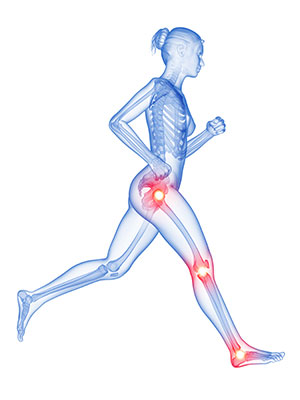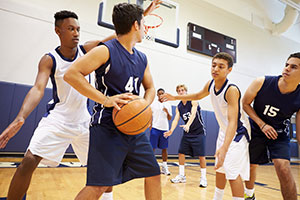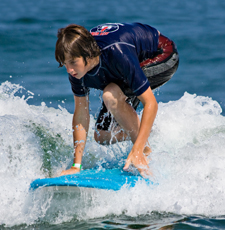What are growth plates?
 Growth plates are unique to children. A growth plate is soft tissue
that grows on the end of long bones that is eventually replaced with
solid bone. According to the National Institute of Arthritis and Muscles
and Skin Diseases (NIAMS), a growth plate resembles a gap between the
long bone, called the metaphysics, and its head, called the epiphysis.
During adolescence, these plates are replaced by bone. Girls' skeletons
mature earlier than boys, therefore older boys are more likely to have
a growth-plate injury than older girls. Growth plates are the weakest
areas in a child's skeleton and are the most susceptible to injury.
If not corrected, a growth-plate injury can stunt the growth of a bone,
creating a situation in which one leg or arm is longer than the other.
Growth plates are unique to children. A growth plate is soft tissue
that grows on the end of long bones that is eventually replaced with
solid bone. According to the National Institute of Arthritis and Muscles
and Skin Diseases (NIAMS), a growth plate resembles a gap between the
long bone, called the metaphysics, and its head, called the epiphysis.
During adolescence, these plates are replaced by bone. Girls' skeletons
mature earlier than boys, therefore older boys are more likely to have
a growth-plate injury than older girls. Growth plates are the weakest
areas in a child's skeleton and are the most susceptible to injury.
If not corrected, a growth-plate injury can stunt the growth of a bone,
creating a situation in which one leg or arm is longer than the other.
What injuries occur to growth plates?
Because they are weak, growth plates can fracture. Ligaments surrounding a child's joint are not yet strong and may not be able to fully stabilize a joint. A blow, such as twisting an ankle or knee, can cause an injury to the growth plate. The overuse of a joint may cause injury too. For example, a baseball pitcher can damage his growth plate at the end of his arm due to repetitive use. The NIAMS lists the most common growth-plate injuries as those to fingers, the outer bone of the forearm, the wrist and the lower leg bones.
There
are five types of growth plate injuries. The following is an adaptation
of the Salter-Harris Classification of Growth Plate Injuries. 
Type 1
The epiphysis and metaphysics are separated (short bone and long bone, respectively), but the growth plate still connects the two bones in vital areas.
Type 2
The metaphysics and growth plate are cracked and partially separated from the epiphysis.
Type 3
The epiphysis and growth plate are cracked and partially separated from the metaphysics This fracture is most common in the lower leg.
Type
4
The epiphysis, growth plate and metaphysics are cracked and migrating from the main bone structure — most commonly near the elbow.
Type 5
The epiphysis is crushed, compressing the growth plate. As the least common of all growth plate injuries, it usually stunts growth prematurely in a child.
Casting is necessary for types 1, 2 and 3. Healing time varies, but prognosis for recovery is good. Type 4 and 5 requires surgery for proper alignment and healing. Type 5 fractures have the worst prognosis for recovery, and bone growth is usually stunted.
